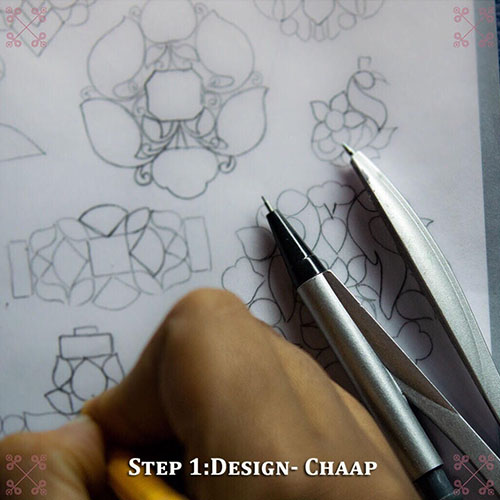“Uncut Diamonds (Polki) Jewellery” is sure to capture your imagination, if you dream of a Royal Indian jewellery, We all love the elegance and regal nature of Jadau Jewellery!
During my visit to Jaipur, I had the opportunity to visit the Raniwala 1881 Experience Centre and witness their spectacular Uncut diamond (Polki) Bridal Jewellery, made in great craftsmanship and beautiful pastel shades of Meenakari.
Uncut Diamonds (Polki) is traditional, royal, elite and a great reminder of India’s rich heritage. The process of making this jewellery requires great skill and craftsmanship, the art of making this jewellery comes from the grandeur of the Mughal era.
Since we are always asked about what this form of jewellery is all about, this leads to my interest to understand the procedure of Jadau Jewellery making at Atelier Raniwala 1881.
First, let explain to you what do the following terms mean

1)Uncut diamond (Polki)
Uncut diamond (Polki) jewellery is made of unfinished natural diamonds. Polki is essentially an uncut diamond that is mined from the earth in a natural way without any enhancement or lab creation. Polki is always in great demand and highly valued because of its natural form. It was introduced in India by the Moghuls.
2) Jadau
Jadau is very wrongly misinterpreted and people think it is a form of jewellery. Well, actually it is a technique used in making Uncut Diamond (Polki) jewellery.

3) Meenakari
Meenakari is a colourful style of jewellery that flourished during the Mughal era, and was hugely popular with Rajasthan royalty. It is the art of colouring and ornamenting the surface of metals by fusing over it brilliant colours that are decorated in an intricate design.
Now let’s understand the process of handcrafting Jadau Jewellery which is divided into six parts:

1) Design (Chaap):
The design is the first & most important step where the graphic representation/ blueprint of all ideas and thought-process is formed. The proficient designers work hard to prepare exquisite formations out of modern inspirations and rich heritage. These designs are shared with the karigars, who bring them to life with sheer aestheticism.

2) Mount (Ghat):
Ghat is a gold frame over which the complete jewellery is built, crafted by Ghadia. The sections are structured to bring the final look of the design. Ghats are made using 14-22 karat gold forms. After the ghats are completed, they are given to engravers for next stage of art.

3) Engraving (Khudai):
Khudai being the third process, is where engravers create beautiful reliefs on the ghats for enamelling. For engraving, the Ghat is mounted on a wooden baton, with a layer of sealing wax, then the outlines are prepared using a pen or pencil then the engraving is done using a sharp metal tip. The engraved piece of Ghat is shared with the Meenakaars for the further ornamentation.

4) Enamelling (Meenakari):
Enamelling, here is the art of ornamenting the gold by fusing glass in it. The meenakaar paints the enamel using a brush then fires it at high temperatures, so the enamel holds the surface. Multiple coats are painted and fired to achieve the desired thickness and reflection. After cooling the enamelled piece, the jadaia takes it to the next process of embedding the stones.

5) Embedding (Jadai)
Embedding (Jadai) is the fifth stage of this process, where the jadaia embeds the gemstones using kundan in the structures of the jewellery. The ghat is again mounted on the sealing wax, the laakh is filled in every section of the ghat & is heated again to remove any air pockets. Once the required amount of stones are sorted, gemstones are foiled with a shining metal foil (made of gold or silver), as it adds depth and brilliance to the stone. After foiling – the Jadaia creates a precise rim around the structure of gold over the layer of lac, places the foiled stone and fills the sides with layers of kundan all around.

6) Beading (Prioi):
Piroi is the final step of making a jadau jewellery. After all the beautification with meena and jadai, prioi assorts it to the final piece of art. All the segments of beautified ghats are composed together with the use of threads & metal rings; pearls, small gold beads & stones are tied to embellish the final look !!!

In today’s time, Jadau art holds a magnificent respect for its luxurious style. It was indeed a very educative experience for me to visit Atelier Raniwala 1881 and understand the procedure in detail.
A big thank you to the team Raniwala Jewellers! Till then enjoy wearing your gorgeous Uncut Diamond Jewellery!! Stay tuned for more! See you soon.
